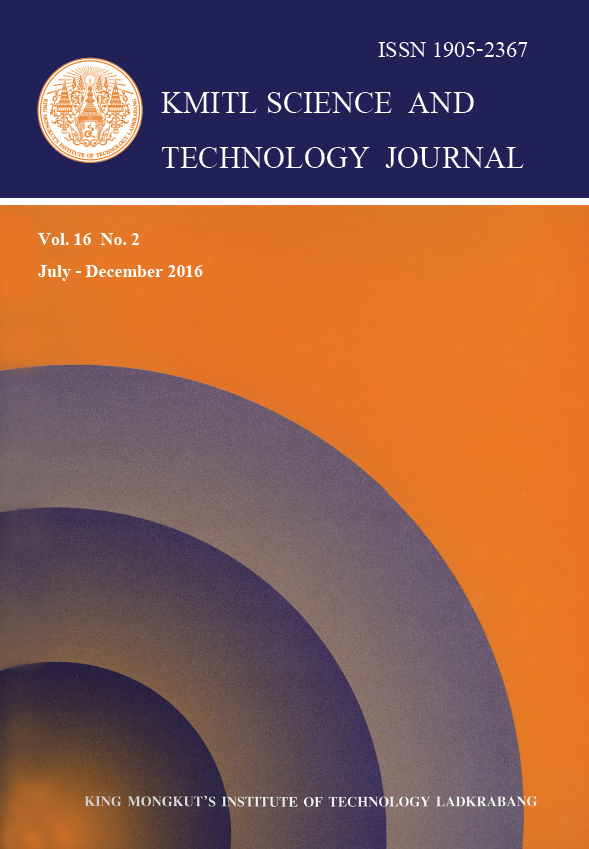Genetic Studies on the Relationship between Isozymes and Allelopathic Activity in Hybrid Rice
Main Article Content
Abstract
Abstract
Genetic parameters play an important role in rice breeding for heterosis. Twenty three rice genotypes in line × tester model, comprising, three CMS lines; five testers and fifteen crosses were used to study the genetic of allelopathic activity, yield and related characters, all recommended agricultural practices were applied as usual for the ordinary rice field during seasons 2014 and 2015. Some crosses had high percentage of allelopathic activity as follow; IR69625A × Rikuto norin 22 and IR69625A × Giza 179, with values of 87 and 85%, respectively. The varieties Rikuto norin 22 and Giza 179 exhibited the highest activity against E. crus-galli. The obtained results referred to high genetic effect controlling studied traits. The dominance genetic variances playing the major effect in the inheritance of weed control more than additive variance. The activities of POD from the samples of rice leaves were higher than those from rice roots. A potential allelopathic Rikuto norin-22 showed 0.20 OD470·g-1 FW·min-1 activity of POD in the leaf parts, but significantly reduced 0.12 OD470/g FW/min in the roots. Among the five testers of rice, the potential allelopathic rice cultivars; Rikuto norine-22, HR 195 and Giza 179 showed stronger activities of POD than non-allelopathic varieties, Sakha 103 and Giza 178, in their leaves. The bands of EST isozyme were varied among the five varieties of rice, allelopathic rice variety, Rikuto norin-22, had six bands (as numbers) of A, B, C, D, E and F. Allelopathic rice variety Giza 179 had five bands of A, B, C, D and F. The EST of C was the characteristic brand of both allelopathic rice cultivars. However, the non-allelopathic rice cultivars had much less concentration of EST isozyme, it was absent in Sakha 103, the non-allelopathic rice cultivar. So, Potential allelopathic rice had greater activity of peroxidase isozyme and more spectrum bands of esterase isozyme than non-allelopathic rice varieties.
Keywords: rice, allelopathy, peroxidase, esterase, additive, dominance, heritability
*Corresponding author:
E-mail: elgamal.rrtc@gmail.com
Article Details
Copyright Transfer Statement
The copyright of this article is transferred to Current Applied Science and Technology journal with effect if and when the article is accepted for publication. The copyright transfer covers the exclusive right to reproduce and distribute the article, including reprints, translations, photographic reproductions, electronic form (offline, online) or any other reproductions of similar nature.
The author warrants that this contribution is original and that he/she has full power to make this grant. The author signs for and accepts responsibility for releasing this material on behalf of any and all co-authors.
Here is the link for download: Copyright transfer form.pdf
References
[2] Naderi, R. and Bijanzadeh, E., 2012. Allelopathic potential of leaf, stem and root extracts of some Iranian rice (Oryza sativa L.) cultivars on barnyardgrass (Echinochloa crus-galli) growth. Plant Knowledge Journal, Australia, 1(2), 37–40.
[3] Zhu, H.X., Yang, X.Y., Ge, C.L., Gong, Z., Wang, Z.G., Lu, S.S. and Ma, F., 2004. The effects of heavy metal on peroxidase isozyme of rice. Acta Agriculturae Nucleatae Sinica, 3, 233–236.
[4] Zhang, X.Z., 1992. Research Methods of Crop Physiology. Publishing House of Agriculture in Beijing. pp. 136–143.
[5] Asperen, K., 1962. A study of housefly esterases by means of a sensitive colormetric method. Journal Ins. Physiol., 8, 401–416.
[6] Gomez, K.A. and Gomez, A.A., 1983. Statistical Procedures for Agricultural Research. 2nded. Jhon Wiley and Sons, New Yourk, USA. p.680.
[7] Dilday, R.H., Lin, J. and Yan, W., 1994. Identification of allelopathy in the USDA-ARS rice germplasm collection. Australian Journal of Experimental Agriculture, 34(7), 907–910.
[8] El Shamey, E.A.Z., 2012. Genetical studies on restoring ability and allelopathic activity on some lines of hybrid rice. Ph.D. Thesis, Fac. Agric., Tanta Univ., Egypt.
[9] Jensen, L.B., Courtois, B. and Shin, L., 2008. Locating genes controlling allelopathic effects against barnyardgrass in upland rice. Agronomy Journal, 1, 21–26.
[10] Abo–Youssef, M.I., Dora, S.A., Abo-Shosha, A.A.M. and El-Shamey, E.A.Z., 2007. Genetical analysis of yield and some related characters in hybrid rice. Egyption Journal of plant breeding, 11(2), 551–561.
[11] Li, D., Zhou, Y.J., Liu, X.C., Yu, L.Q., Tang, F.B., Wei, X.H. and Guo, L. B., 2004. Evaluation of allelopathic potential of some different germplasm rice against weeds. Chinese Journal of Rice Science, 4, 309–314.
[12] Zhang, Z.B., Zhou, Y.J., Lu, Y.L., Li, D. and Yu, L.Q., 2005. Identification of allelopathic potential of Chinese rice (Oryza sativa L.) germplasm. Allelopathy Journal, 1, 111–118.


